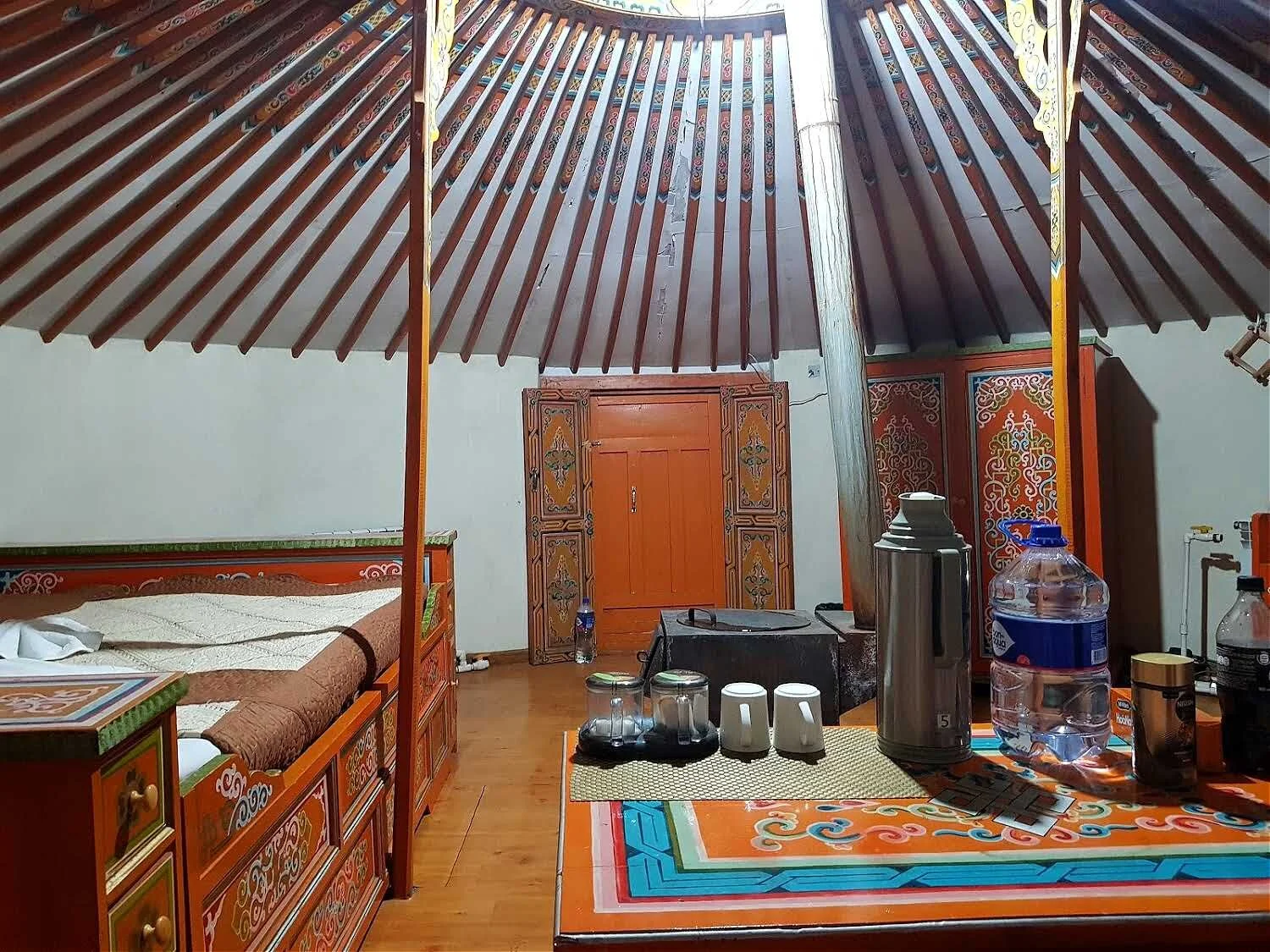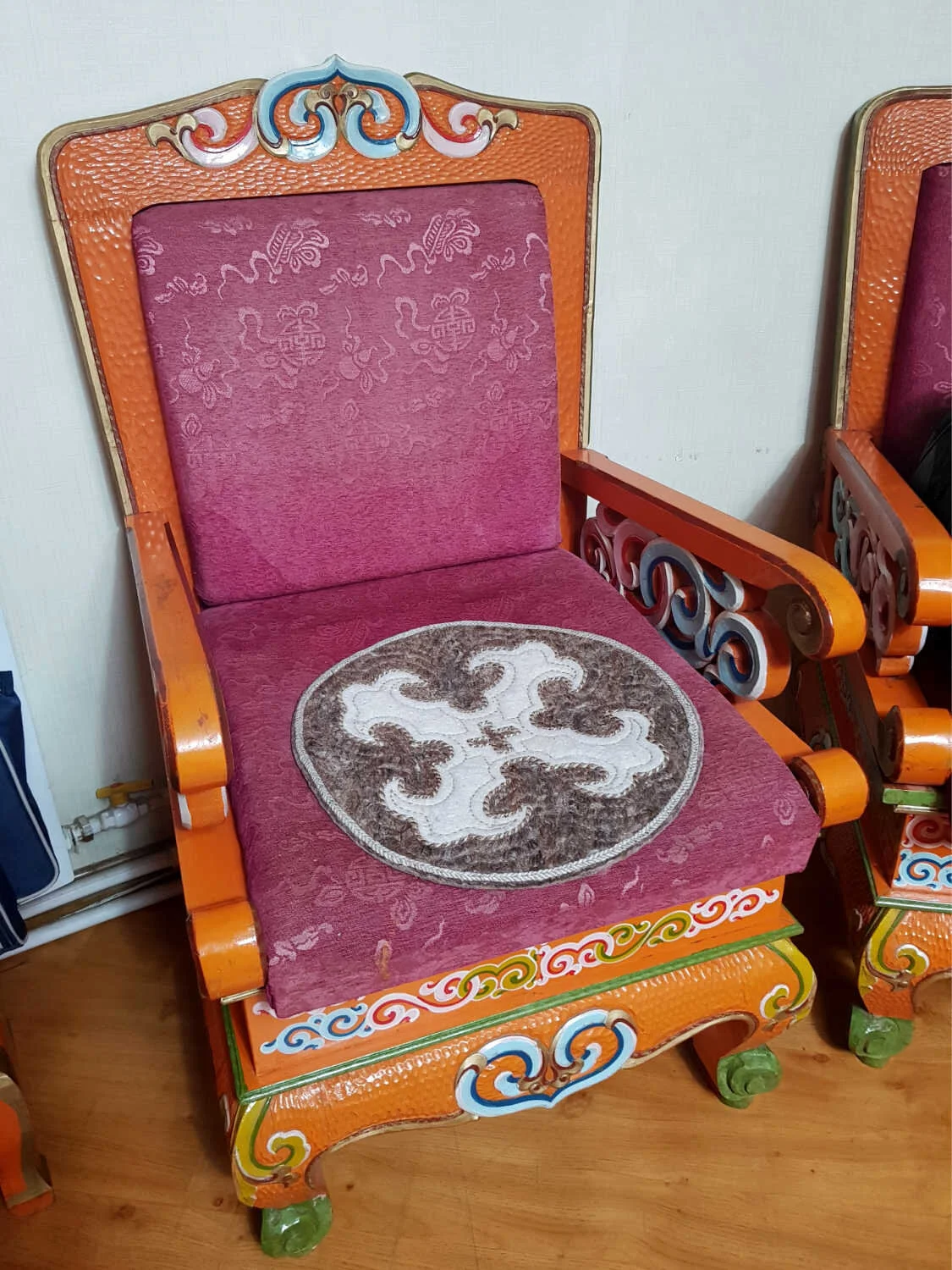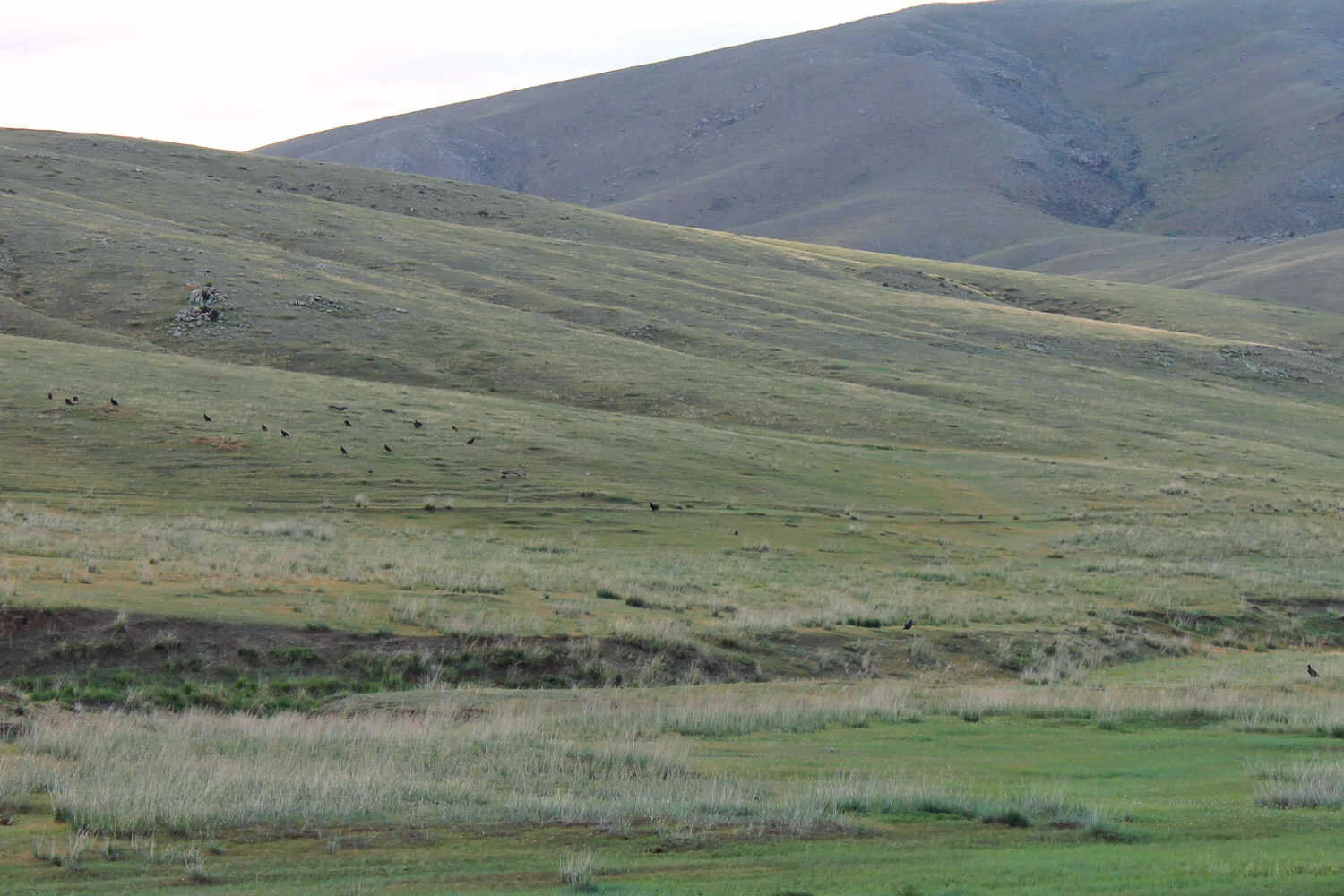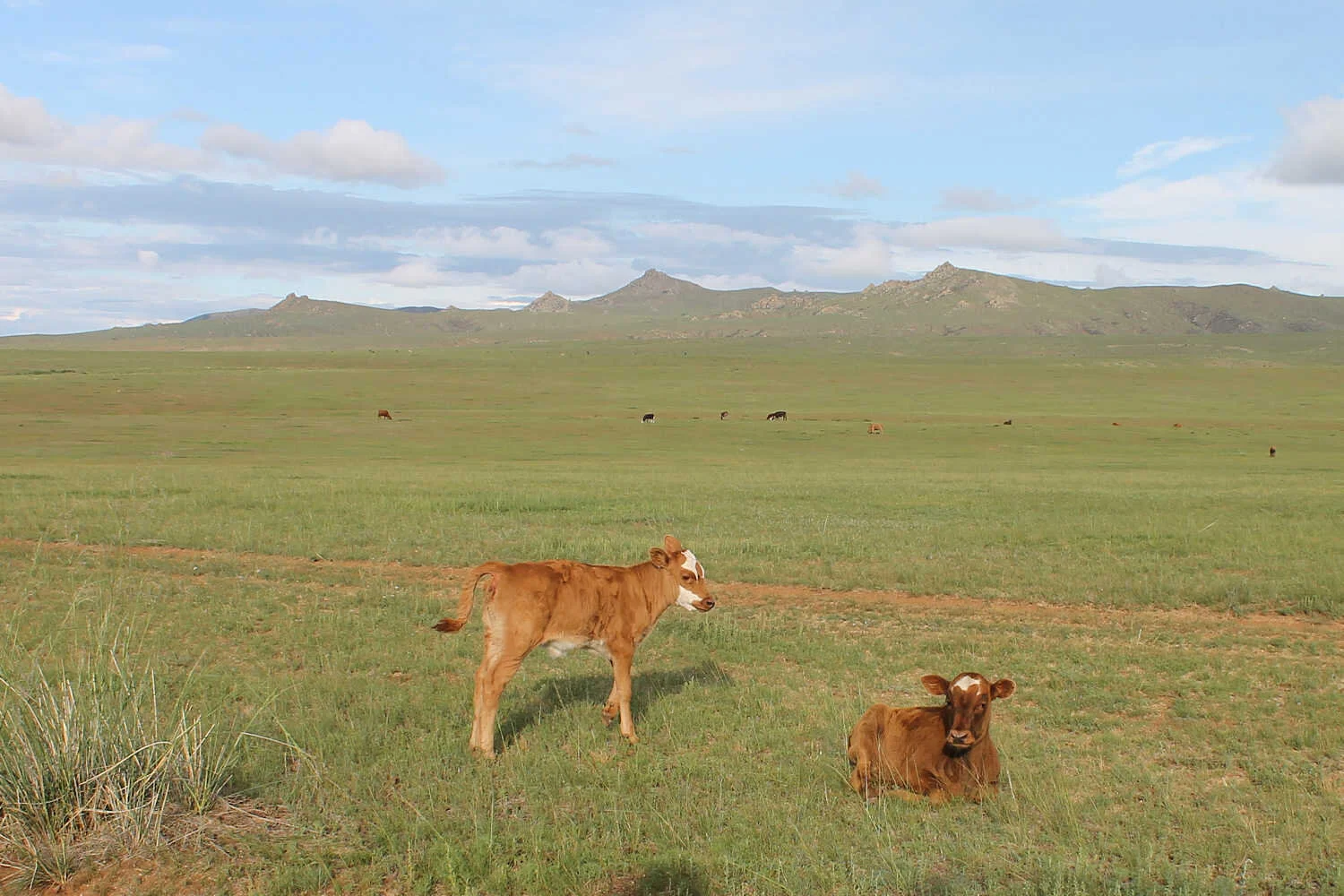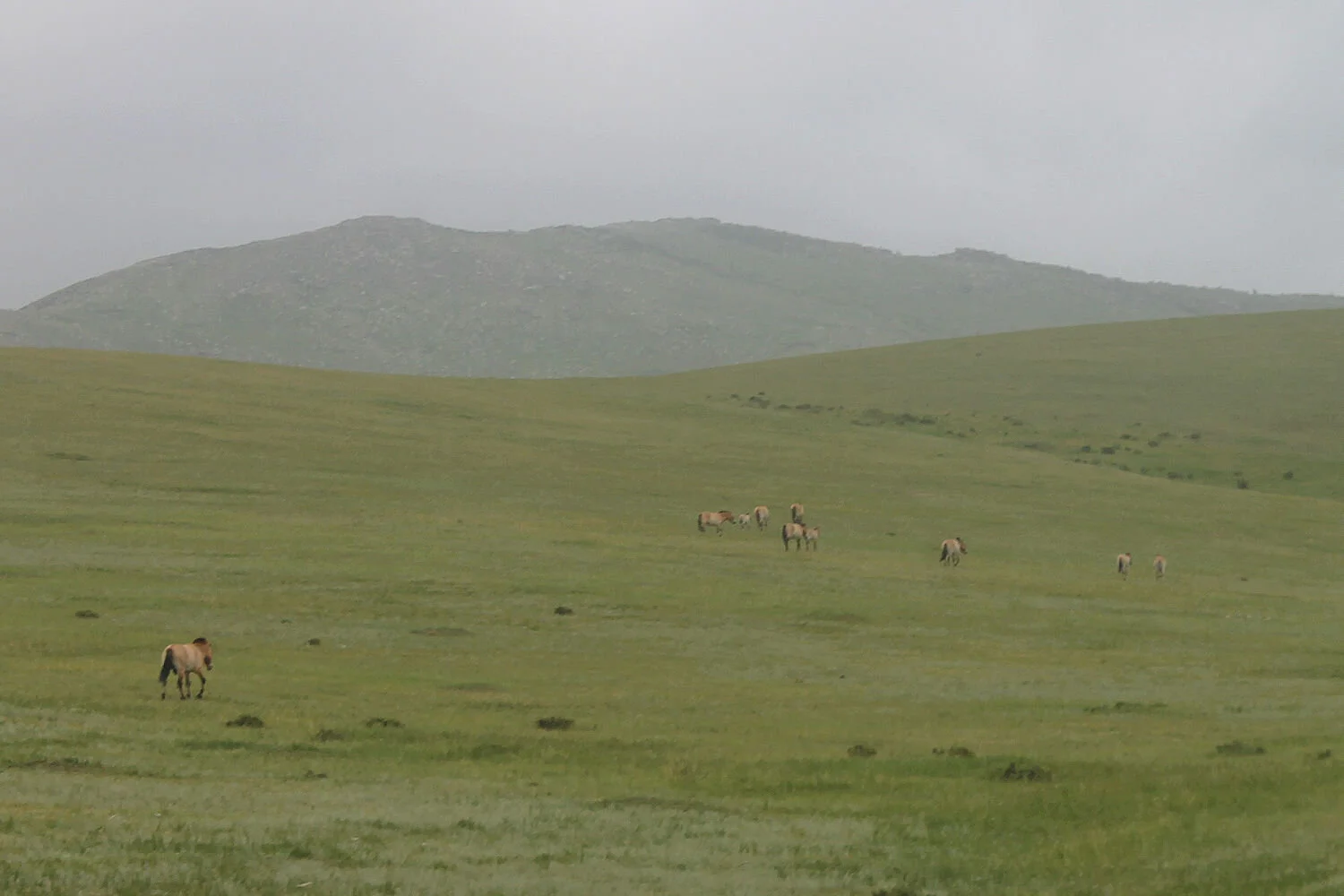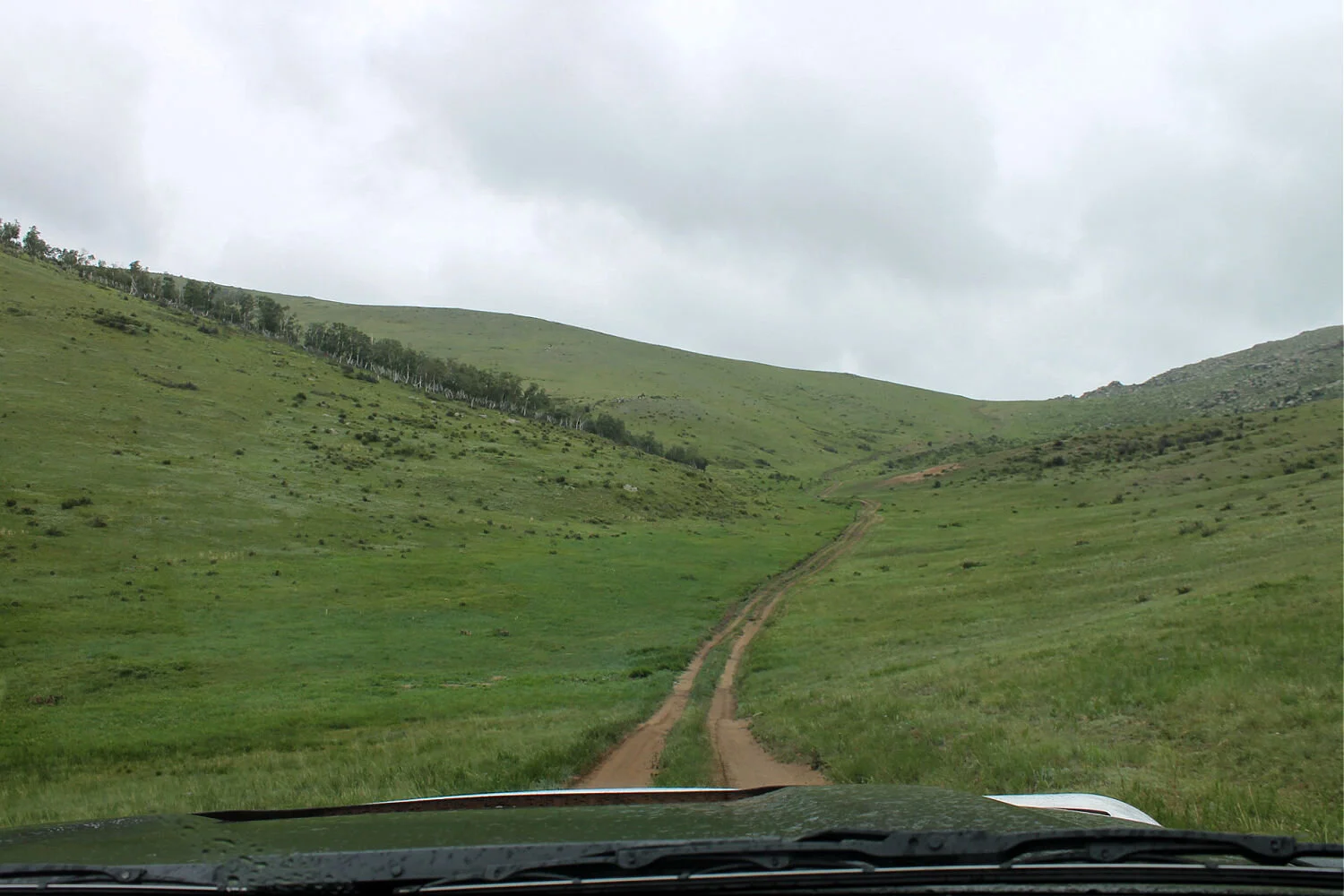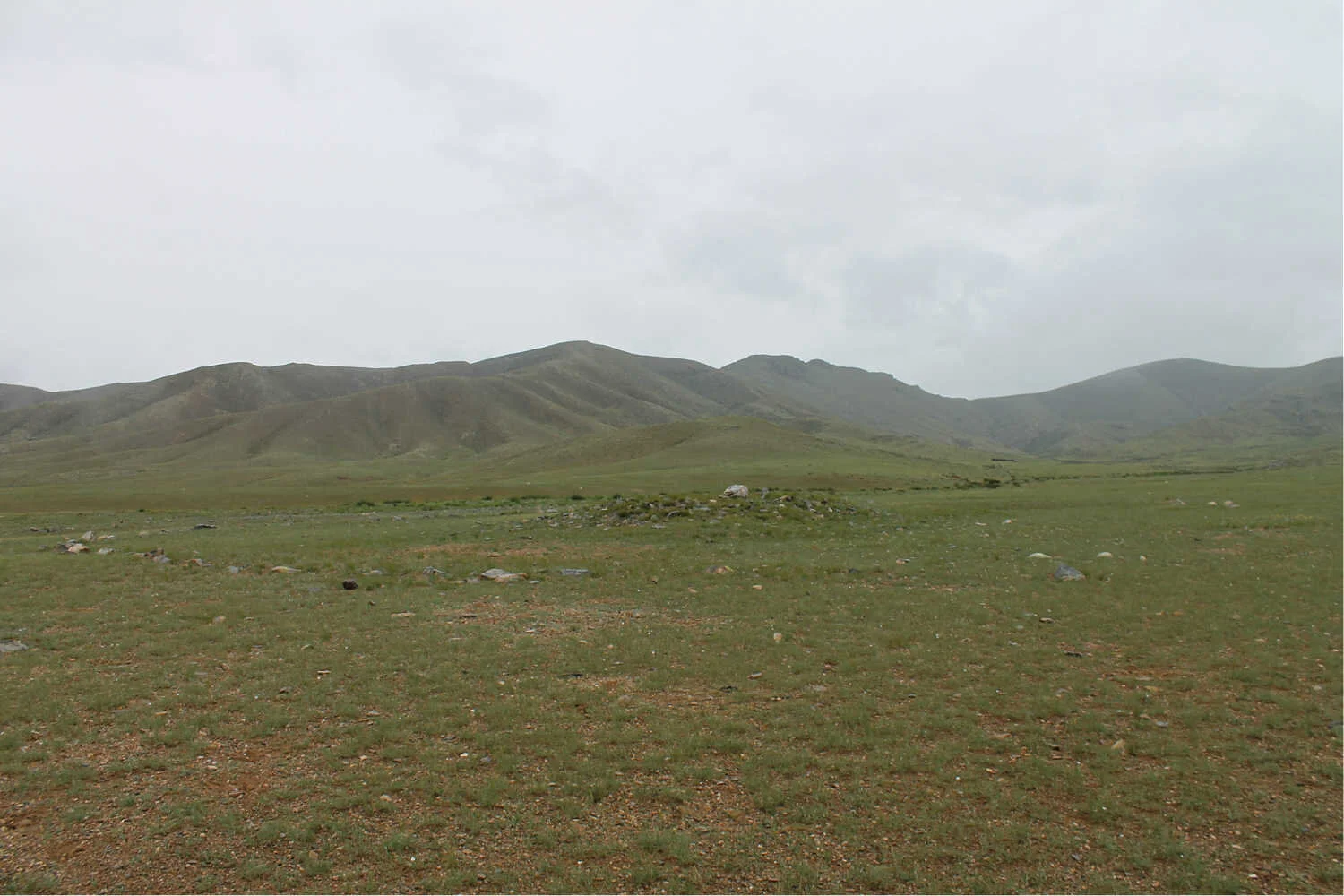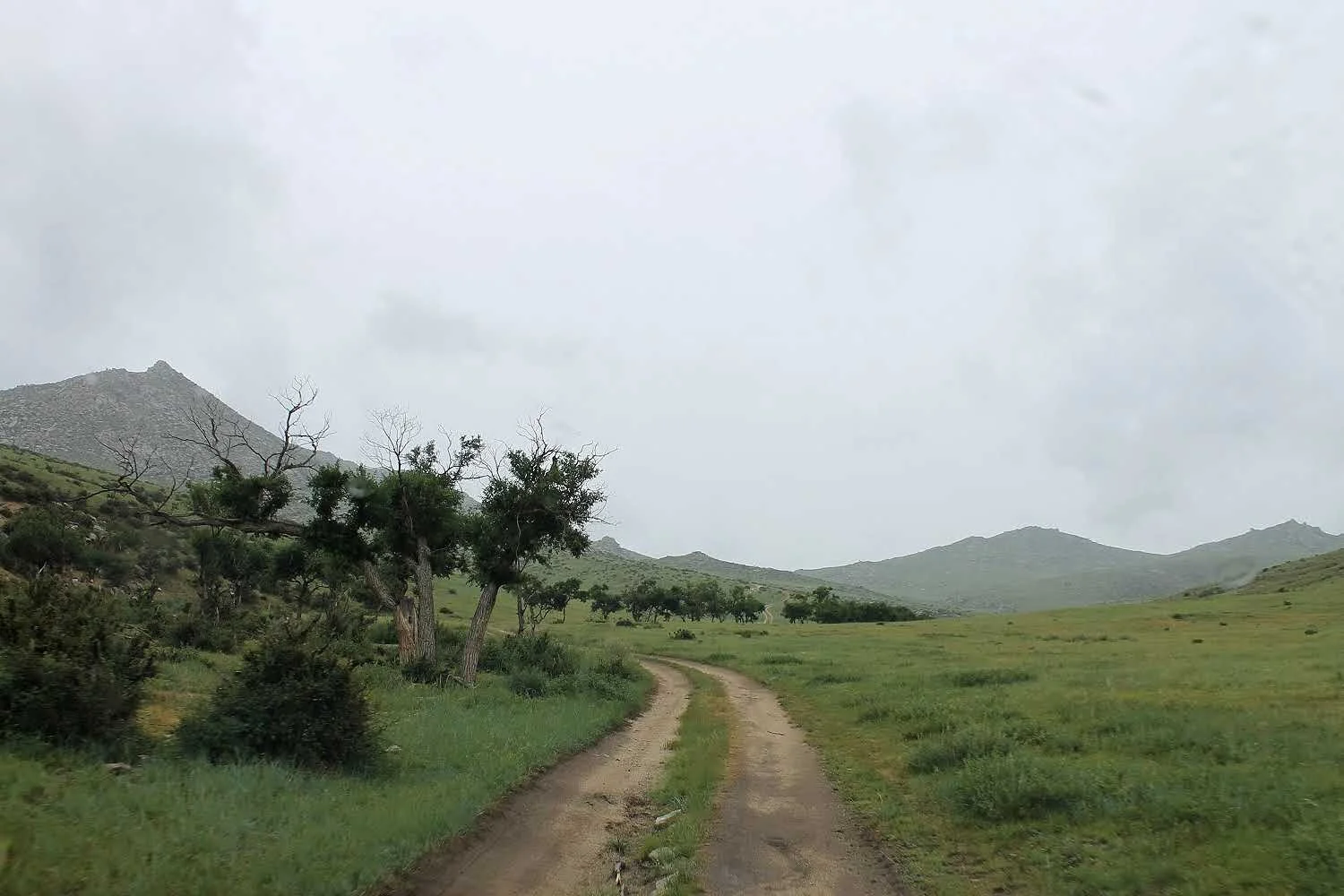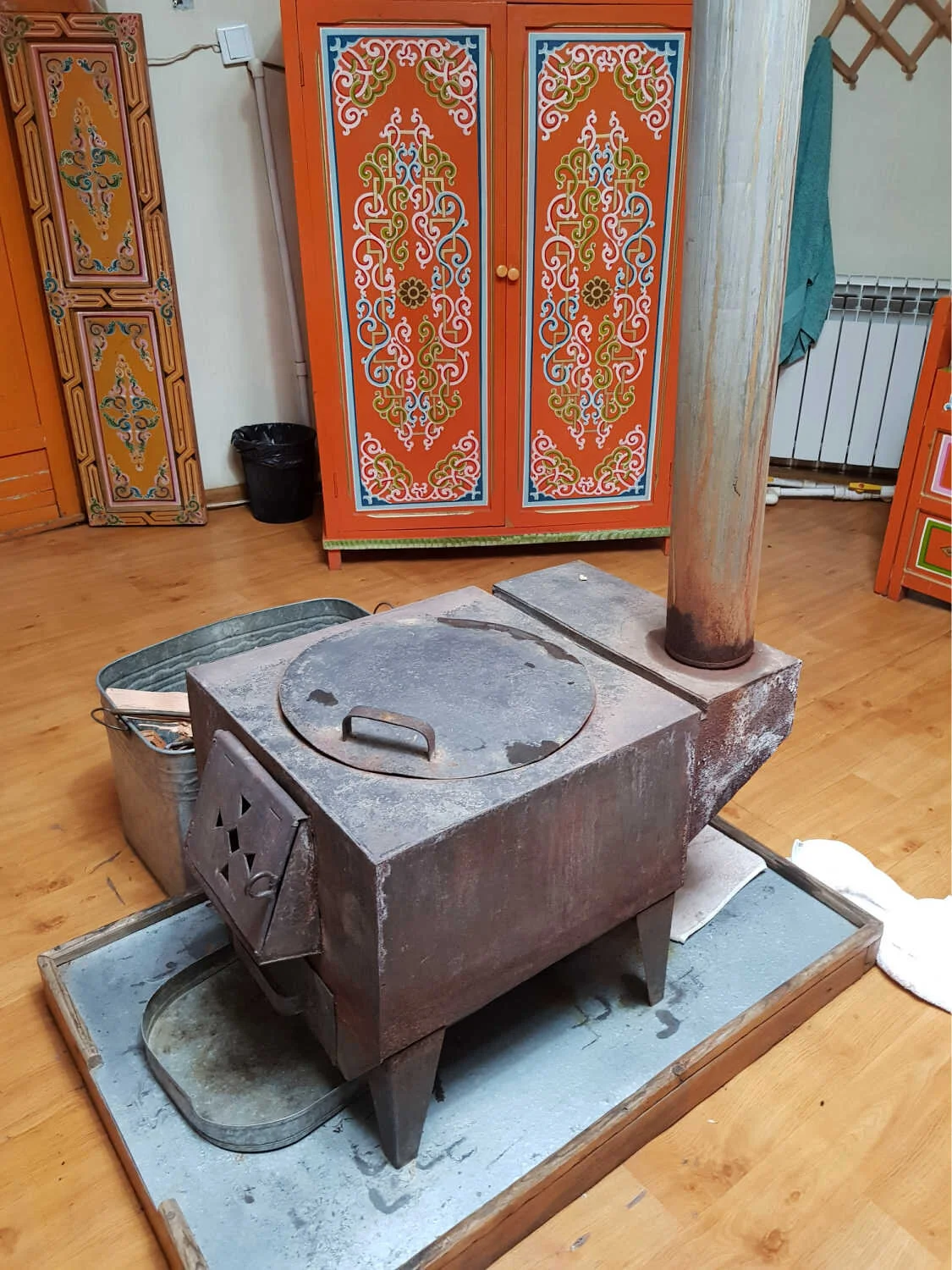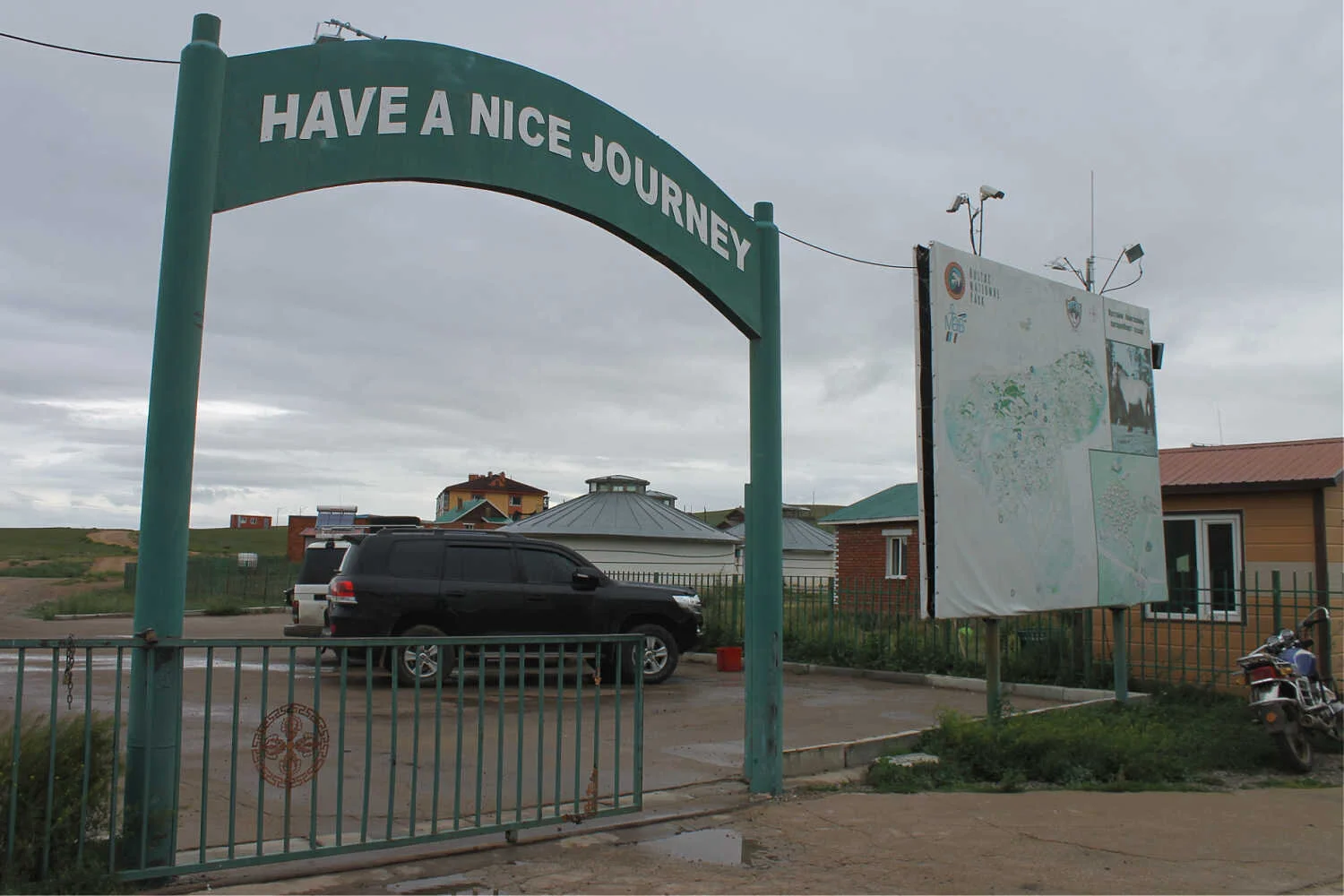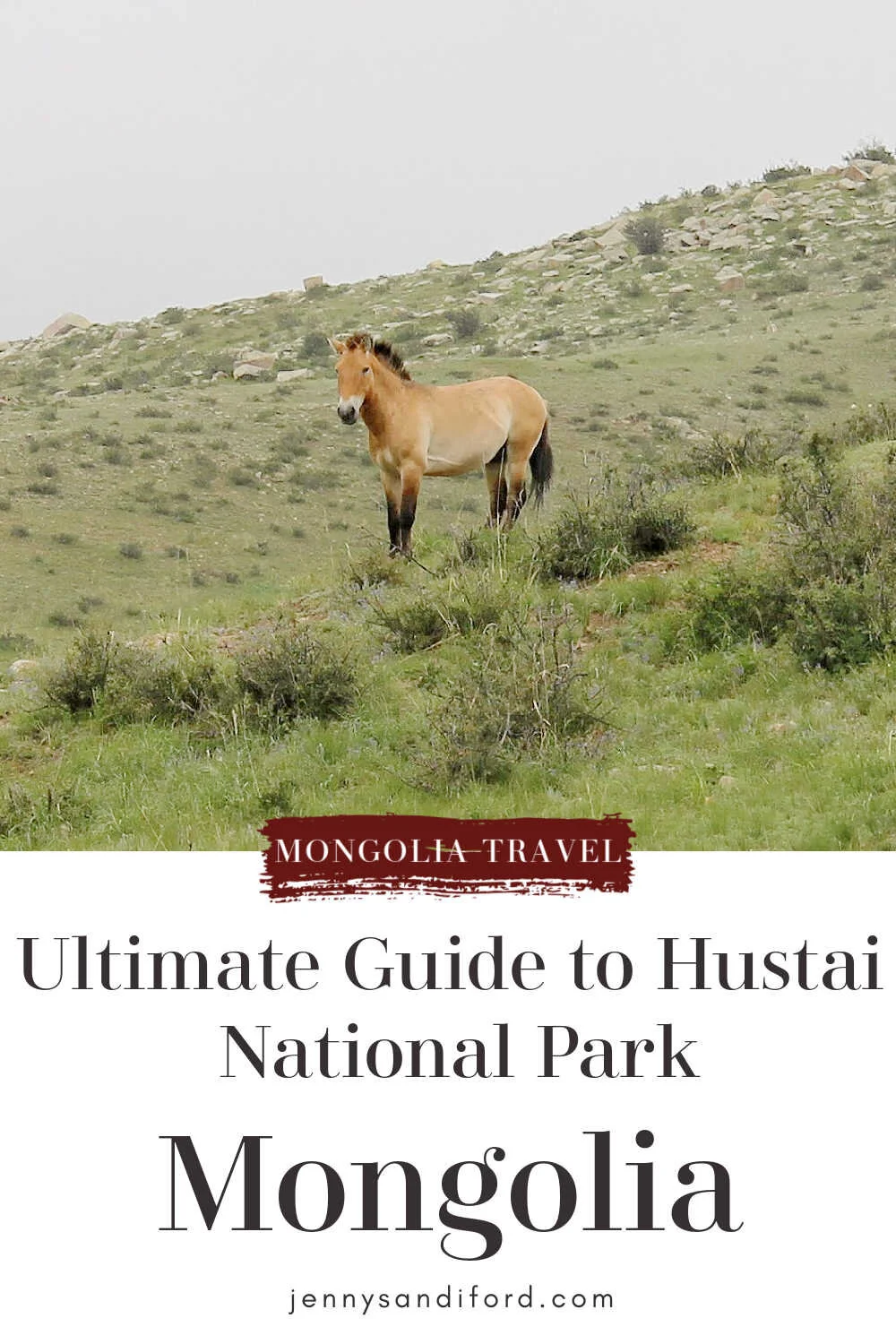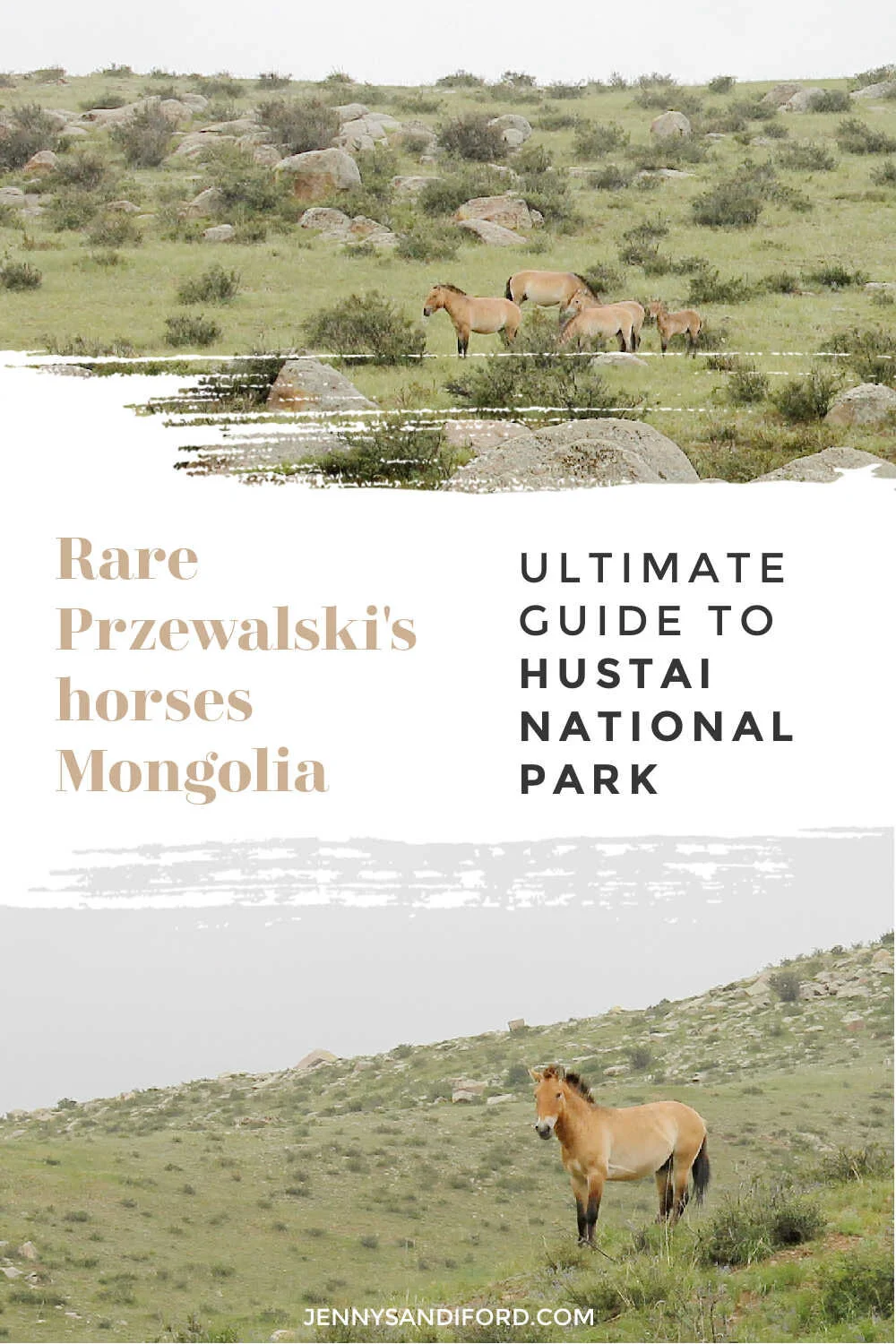Ultimate Guide to Hustai National Park Mongolia
Where- Hustai National Park, Mongolia
When- August 2020
Hustai National Park (also known as Khustain Nuruu/Хустайн нуруу) is the only place you can see the endangered Przewalski’s horses in the wild. Hustai is an ecotourist destination around 100 kilometers (62 miles) from Mongolia’s capital, Ulaanbaatar. It covers 50,600 hectares of protected nature reserve and is home to 55 species of mammals and 223 species of birds. Many of which are endangered.
I’d describe a trip to Hustai National Park as a Mongolian safari. It is a must see for any nature lover. The camp and the roads are rough, but you are bound to have an adventure one way or another!
Hustai National Park. Photo by Jenny Sandiford
Pin it for later!
Contents
1. History of Hustai National Park
2. Przewalkski’s Horse
3. Our experience
4. Animals we saw
5. Tips and Advice
6. Useful things to pack
7. Summary
*This post contains affiliate links to products I recommend. If you make a purchase through these links I will receive a small commission at no cost to you.
1. History of Hustai National Park
The Przewalkski’s horse, also known as the Takhi, was pronounced extinct in the wild in the 1960s. Now it is making a comeback and is the only true wild horse left in the world today. In 1992, fifteen Przewalkski’s horse were reintroduced into Mongolia at Hustai National Park.
These first fifteen horses brought from the Netherlands to Mongolia, were the beginning of an ambitious reintroduction program to save this rare animal.
The Hustai National Park Trust was set up to manage the reintroduction of the horses and monitor conservation and research projects within the park.
Between 1992-2000 another eighty-four Takhi were released into the park and in 2017 the population grew to 300 horses with thirty-four breeding harems. In 2020 there are 380 horses, and we were told they estimated forty new foals this summer.
Przewalkski’s horses at Hustai National Park. Photo by Jenny Sandiford
Though the population of these horses is slowly growing, they remain a highly endangered species. The males have horrific fights, and kill each other over harems. They only breed in their natal area which means they won't migrate out of the park and grow the population.
Aside from the horses, the park is also home to many rare and endangered species of birds, mammals, reptiles, amphibians, and plants. Since the area became protected, the ecosystem has thrived, and many animals have returned to seek refuge in this unfenced oasis. This incudes grey wolves, red deer, roe deer, Mongolian gazelle, argali sheep, lynx, Pallas cats, and many species of migratory and domestic birds.
Hustai National Park Trust doesn’t receive any State subsidies. It is managed by an NGO, and is funded by tourism from the resort, donations, and park entrance fees. Hustai National Park was certified as a member of the world biosphere network of natural reserves in 2002 by the Man and the Biosphere Program (MAB) of UNESCO. And in 2007 Hustai National Park enrolled as a member of International Union for Conservation of Nature (IUCN).
This park has been operating since 1992, but I worry that management has slipped. We visited Hustai in 2013 and were given a lot of information about the park, the animals, and received adequate service at the camp. We also had a guide accompany us around the park.
This time around in 2020, I don’t know if it’s because of Covid-19, but the service at the camp was terrible, we were given no information, no advice, very poor service at the camp and did not feel at all welcome. I hope the park lifts its game as I would hate for the poor service and lack of information to reflect in lowered tourist numbers and management of the park. For the animals to thrive, this park needs more support and better management.
2. Identifying a Przewalski’s horse
Przewalkski’s horse (Equus prezewalkskii, Poljakov,1881)
These horses can be identified by their dark, spikey mane that stands up straight and fuzzy. They have dun colouring, which ranges from sandy coloured to darker brown on the body, with a lighter belly.
They are more stocky and shorter than domestic horses, and have a thick neck, and a large heavy head. Some have pretty white noses.
The Przewalkski’s horse is a separate species from modern domestic horses. Genetically they remain very distant; they have 66 chromosomes, where domestic horses have 64.
Przewalski’s horse Hustai National Park. Photo by Jenny Sandiford
3. Our experience at Hustai National Park
Day 1- Friday evening
Driving
We left Ulaanbaatar after Michael finished work, knowing the forecast for the weekend wasn’t ideal. It predicted thunderstorms, rain and a drop in the summer temperatures. But it was my birthday the next day, and either way the weather wasn’t going to stop us.
We expected the drive to be around an hour thirty minutes, but knew that getting out of Ulaanbaatar on a Friday afternoon meant horrific traffic. We didn’t know what we were in for. We stopped at E-mart (huge supermarket) and Tous Les Jours (a great bakery) to pick up supplies for the weekend; enough food, water and bakery treats to survive without needing to eat any of the camp food.
But on the only road west out of town, there was a major accident at the train crossroads and there was no way around it. We sat in an unmoving line for two hours.
By the time we reached the toll booth on the outskirts of town, heavy clouds had darkened the sky. We paid the 1000Tugrik ($USD0.35) toll and set off on the single lane highway into the vast countryside. Most of the drive is on a well paved road, but there are the usual hazards of massive potholes, cars driving at you on the wrong side of the road, and the numerous horses and cows that step out in front of cars. The drive to Hustai took us five hours.
Arriving at Hustai National Park
We followed the sign off the main road pointing us toward Hustai Tourist Resort. The last 13 kilometers (8 miles) was off-road on a bumpy dirt track. I used the Maps Me app to make sure we were on the right road. This is an offline map that you can use all over Mongolia.
We got to the camp around 9pm. The sky was clear, and the previous heavy rain left the lingering smells of wet earth and damp summer herbs in the air.
A girl met us at the entrance but seemed confused that we were there. She didn’t speak any English but was friendly, and after talking on her phone for a while she walked us through the ger camp. It looked the same as when we had been there in 2013 with my mum, but more rundown. Concrete crumbled from the edges of buildings and the soggy gers (traditional Mongolia felt tents) had seen better days. A soaking wet, but friendly young dog accompanied us in, bouncing excitedly off our legs and bags.
Hustai Tourist Resort ger camp. Photo by Jenny Sandiford
Home for the weekend
Our guide showed us to ger #5. The only concrete ger on the end of the row. We stepped inside to find a double bed, beautiful hand painted traditional furniture and the floor covered in puddles of water. The girl shrugged and pointed to the spare single bed to put our bags to avoid the puddles; she giggled at the water on the floor. The ger had a traditional stove in the center with a chimney that went out the roof hole, also the place where all the rain can come in.
Inside our cosy ger. Hot water with tea was provided. Photo by Jenny Sandiford.
Comfy double bed with a proper mattress. Photo by Jenny Sandiford.
Beautiful hand painted ger furniture. Photo by Jenny
Hand painted central ger pole. Photo by Jenny
Chair with hand-painted Mongolian designs. Photo by Jenny.
Dinner
We were pretty hungry so ignored the water, seeing there were a few small towels I could use to mop it up later. We went to the dining area, which was toasty warm and smelled like hot Sunday roast. While we waited for the cook, the girl gave us a brochure in English about the park that had a basic map on it (see tips and advice section at end for a picture of the brochure and map).
Our meal was simple, plain rice with pretty standard Mongolia meat. We were happy to just have some hot food. The cook was nice and asked us when we wanted breakfast.
We knew from the first time we visited in 2013 that you need to get up early to see the horses, so we told her in broken Mongolian we would see the horses first, then have breakfast at 9am.
Hustai Tourist Resort dining room. Photo by Michael Howard
Day 2- Saturday
Morning- Animal spotting
I woke up on the morning of my birthday excited that we were going out exploring to find some animals, one of my favorite activities! Having planned in advance, I had breakfast sandwiches from the bakery in UB, and instant coffee from home. Our cosy ger came with a flask of hot water from the day before, so I heated this up on the gas burner I brought and enjoyed a coffee. I was alive enough at 6.30am to start our adventure.
No one in the camp seemed to be awake, and we didn’t even see the security guard at the gate. The morning air was chilly, but still and clear with no sign of rain.
We hopped in our car, a Toyota Land Cruiser. It is essential to have an off-road vehicle for travelling into the park and a driver who knows how to drive off-road. Luckily Michael is very used to driving around the countryside in Mongolia. If you don’t have an off-road vehicle you can book in with the Resort before you arrive and they will provide you with a vehicle and driver. Or, booking a tour through a tour company might be the least stressful option if you don’t want to the stress of driving.
Through the ger door to a beautiful morning in Hustai National Park. Photo by Jenny Sandiford.
First animal sightings
Marmots
Driving down the bumpy dirt road, Siberian marmots (Marmota siberica) began popping up all around us. We were the first, and only people to enter the park early that morning. The marmots darted between burrows, poking their chubby heads out to see what the disruption was.
If you haven’t seen a marmot before I would describe them as fat, fluffy balls of lard that run with the least grace of any creature you’ve ever seen. Some are twice the size of a house cat and they make fast dashes in lopping strides as their black tails flap up and down in the air. When you spot them, you can’t help but smile.
Marmots are one of the most prolific creatures at Hustai and are expert architects. Their burrows are used by many creatures; from foxes, to wild cats, to badgers, polecats and various other creatures that like to steal burrows.
They live in colonies of 3-7 individuals and you will often see them at the mouth of burrows calling to each other, sometimes standing on their hind legs like meerkats. They are always on the lookout as they are a hearty meal for larger predators (and out of the park a delicacy for Mongolians). I could watch these guys all day they are so entertaining.
Side note- if someone in Mongolia offers you marmot to try, don’t eat it. They carry bubonic plague and there has been several outbreaks in the last year because of people eating marmots. (Also it would be embarrassing to die of a medieval disease such as the Black Death on your holiday.)
An inquisitive marmot. Photo by Jenny Sandiford
Marmot sitting at the entrance to its burrow. Photo by Jenny Sandiford
First Przewalski’s Horse sighting
Michael insisted we move on because we were still within sight of the camp and I kept asking him to stop to watch marmots. We needed to find some horses.
We didn’t have to go far. We stopped at the first designated parking spot off the road, a place known for seeing horse. We spotted three Przewalski’s horses in the distance on a rolling green hill. Our first sighting!
We kept going and saw plenty more marmots. We passed the research station continuing down to the plains (turning right at the research station in the morning is the best way to go to see horses; we didn’t know that at the time.)
As we drove along, the valley widened, and the hills had gentler slopes. Behind were steeper rocky peaks.
Cinerious Vultures
Michael spotted some mysterious black dots in the distance moving up a slope. We got closer. There were thirty-three Cinerious vultures (Aegypius monachus) all gathered in one place. Even from a distance you can tell how huge these birds are. They can have a wingspan of up to 295cm (116inches) and when you see their great bodies heave off the ground, you could mistake them for harpies or feathered dragons. Watching them through the binoculars was fascinating. They were walking as a group, their massive frames waddling in a herd up the hill. Amongst the group were several giant babies, they looked ruffled and had light grey feathers compared to the parents black and dark grey.
While I was watching the vultures, Michael spotted a lone bird sitting on a rock not too far from the car. We checked it out in the binoculars and saw that it was a Little Owl (Athene noctua); it was sitting perfectly still and watched us the whole time we stopped there.
We watched the hills in the background hoping to spot an argali sheep or some deer but didn’t see any.
Though a bit hard to make out, all the small dots on the hill are Cinerious Vultures. Photo by Jenny Sandiford
Horses and foxes
We continued on and spotted two more groups of horses high on the hills to the right. One a group of five, another a group of seven. Too far to get a good photo, but great to watch through binoculars. We also saw two Corsac foxes (Vulpes corsac), the first of many.
As we drove on the sun began creeping over the hills. It was around 7.30am and there was lively animal life everywhere. We talked about how cool it would be to see wolves, a Pallas cat or a lynx, but knew it would be very unlikely to see any of these elusive and secretive creatures.
Hustai National Park all to ourselves. Photo by Jenny Sandiford.
Surprise sighting!
We drove down a hill and passed an area of low swampy ground with sides that rose into rocky steppe. Michael slammed on the breaks as he spotted something dart across the road just ahead. A cat. I was so excited I tried to see where he was pointing and saw a flash of distinctive silvery-grey shoot past.
I jumped out of the car with binoculars and scanned the areas where the cat had run off to but couldn’t see anything. Michael stood on the front of the car and searched the area. He has superpowers for spotting things. “It’s there,” he said confidently. We both looked toward the rocky slope and sure enough the silver cat had stopped and in a brief flash looked back at us.
It was a Pallas cat (Otocolobus manul).
I had seen enough pictures from obsessive googling to know that distinctive colouring and body shape. At first I thought a kitten when it ran past, it was so small, but looking again it was definitely an adult cat. It was sure of itself and on a mission. We watched it for a split second and then it was gone. My birthday was a success. I had spent eight years hoping to one day see an elusive Pallas cat, and to see one on my birthday was unbelievable.
Michael and our trusty land cruiser. Photo by Jenny Sandiford.
More bumpy roads and more foxes
I was starting to get car sick from the bumpy roads and constantly looking through binoculars, but I was full of enthusiasm after seeing the Pallas cat and wanted to find more animals. We got up close to several corsac foxes. They were curious about us, and several ran away, but one stopped not too far from us and started rolling around on the ground. It was playful and fun to watch. Its mate sat at a safe distance not too far away.
Most foxes I’ve seen in Mongolia are red foxes but all the ones in Hustai were corsac foxes which was new to me. They have black tips at the end of their tails and their heads a much broader at the top than red foxes and have bigger ears.
At around 8am we decided to turn around and head back to make it in time for breakfast at the camp. At that point we were down on the flat planes of the steppe. There were lots of cows around, but we couldn’t see any other animals out on the flats. I had hoped to see some deer or gazelles, but no luck.
Spot the tiny corsac fox! Photo by Jenny Sandiford
Calves out on the grassy steppe. Photo by Jenny Sandiford.
Driving back
The drive back was much faster as we didn’t stop as much. We saw a group of Przewalski’s horses in another spot, possibly one of the same groups as before. On the way back we saw a polecat. It moved quickly and was hard to see. I suspect it was a steep polecat because of its colouring and because they are common in Hustai, but it was too fast to be sure. There were more marmots, some small rodents and long tailed ground squirrel (Urocitellus unulatas)
We saw several golden eagles (Aquila chrysaetos), more cinereous vultures, some common kestrels (Falco tinnunculus), and some gigantic ravens (Covus corax). There were quite a few Eurasian Hoopoe (Upupa epops) that were always flying in front of us on the road. I call them hammerheads and they are one of my favourite birds in Mongolia.
There were also a lot of common birds around such as crows, rooks, magpies, sparrows, tits, wheatears, and warblers.
Long tailed ground squirrel. Photo by Jenny Sandiford
Let me know in the comments what bird you think this is. I think it’s a Black Kite but am not sure. Photo by Jenny Sandiford
Breakfast
There was one other group at breakfast. We were the only ones who had been out early in the park, quite a luxury to have a whole national park to ourselves!
Breakfast was a plate of cold slices of cucumber, tomato, cold meat circles, a cheese slice, and an apple. There was also a toaster available with bread with some jam. But bread in Mongolia is not good. Like I said before, bring your own food with you as backup. There were also flasks of hot black tea, instant coffee and Mongolia tea (Suutei tsai- a salty milk tea) that you could help yourself to in the dining room.
Two super friendly dogs that live at the camp and kept us company after breakfast. Photo by Jenny Sandiford.
Souvenir store and information center
We asked the man in the security hut by the gate if we could go into the souvenir store. He was helpful and went in search of the manager for us. She came out of the main building and unlocked the shop.
The shop was in a large concrete ger next to a conference room and information ger. The shop was sparse. The large circular room had empty shelves with a few books, a few stuffed animal toys and an odd collection of knick knack souvenirs. But it had what I wanted; animal identification books. I got Birds of Hustai National Park and Fauna of Hustai National Park. We also got two soft toy horses.
We planned on visiting the archeological sites around the park in the afternoon. I asked the manager if she had any information or books about archaeology. But she couldn’t tell us anything, and there were no books. She just showed us the points on the brochure map and directed us to the information ger next door.
The information center had great info about the wildlife in the park, but nothing about the archaeology. The walls are covered in photos and information like a mini museum. There is also an insect collection and taxidermied adult and foal Przewalski’s horse. I recommend you check this info out before heading into the park.
Gift shop items for sale. Toy horses, animal identification guide books and t-shirts. Photo by Jenny Sandiford.
Afternoon- Archaeological sites
ARCHAEOLOGICAL sites and more horses
We set out around 10am to visit the archaeological sites around this park. This is a loop journey of 80 kilometers (49.7 miles).
Map of Hustai National Park trails from the brochure. Photo by Jenny Sandiford.
We didn’t expect to see as many animals as early morning, but were still on the lookout. We followed the same road through the park, but we turned right at the Research Station and followed the wiggly power lines that border the road. Not far into the hills we spotted a herd of ten horses meandering across the grassy plains. We stopped to watch them as drizzly rain clouds rolled in.
We got some photos and the horses wandered into the distance. We drove into the next valley, green hills scattered with scraggly stands of birch trees on a few ridges. If it was raining heavily, it might be hard to make it up this hill on the dirt road but it was fine in light rain.
Herd of Przewalski’s horses in the valley to the left of the research station. Photo by Jenny Sandiford.
Herd of Przewalkski’s horses wandering across the hill. Photo by Jenny Sandiford.
Heading into a valley. Most roads around Hustai are similar to this condition. Photo by Jenny Sandiford.
Ovoo
At the top of the hill we stopped at an ovoo, a mound of ceremonial rocks for both Shamanic and Buddhist worship. If you walk around the ovoo three times in a clockwise direction, and each time place a rock upon the pile you will receive good luck in travelling. Or, if you drive past an ovoo on a main road you honk at it, this is the fast version of walking around it three times, but it brings you equivalent luck.
Ovoo at the top of the hill between valleys. Photo by Jenny Sandiford.
Ceremonial ovoo at the top of the hill for both Shamanic and Buddhist worship. Walk around it three times for good luck. Photo by Jenny Sandiford.
Stopped at the top of the hill to check out the view. Photo by Jenny Sandiford.
Our mascot along for the ride. Hustai National Park. Photo by Jenny Sandiford.
Lone ranger
As we drove down into the next valley and came across another Przewalski’s horse. This guy was all alone and very interested in us. He stopped and stared at the car and let me take some photos. We passed a low patch in the valley filled with beautiful yellow wildflowers, but with the clouds closing in we kept moving on to our next destination. Trying to find a deer stone.
Lone Przewalski’s horse. Photo by Jenny Sandiford
Yellow wildflowers in a low point in the valley. Photo by Jenny Sandiford.
This handsome fellow stood nice and let me take this photo of him. Przewalski’s horse. Photo by Jenny Sandiford.
Pretty yellow flowers. Let me know in the comments if you know what these are please. Photo by Jenny Sandiford.
Archaeological Sites at Hustai National Park
Hustai National Park website- Archaeological information.
Deer Stone
47 38’25.17”
105 48’5.26”
We came to a fork in the track and took the one to the left, leading toward the deer stone and Moilt Camp. This is a longer route that also leads to the Sepulture and Ungot grave. I used the Maps Me app to make sure we were heading in the right direction. The deer stone is the only archeological site marked on the map. (See the coordinates above, I discovered them on a map in the manager’s office as we were departing so we didn’t get to use them but might be helpful to others).
From the camp it was about an hour and a half to get to this point, but with lots of stops to watch the horses and marmots.
Deer stones are ancient megaliths that are named for the designs of flying deer carved into them. They are tall stones that stand out of place in grassy fields. They are found all over Mongolia. This one in Hustai is from 3000-1000BC, the bronze age. It stands alone in a small fence. The fence must be a recent edition but makes it easier to spot.
Deer stone. Photo from 2013 trip by Jenny Sandiford.
Deer stone in fenced enclosure 2020. Photo by Jenny Sandiford
Fence enclosing the deerstone makes it easy to spot. Photo by Jenny Sandiford.
Sepulture
47 35’25.87”
105 48’4.10”
I’ll be honest, I had no idea what this was. It’s marked on the map, but since there are zero signs around the park we never found it. According to the brochure, it is from 2000-1000BC. From the parks website it says there are nineteen sepultures and they are massive round or rectangular graves marked out by rocks with large corner stones. I wish the brochure map had coordinates on it so we could have seen this. Let me know if you find it!
Ungut Grave
47 33’13.07”'
105 50’59.50”
We drove down from the green hills and found ourselves on a Mars-like desert plain. The grass was gone, and as far as the eye could see the land was pancake flat with a camouflaged road leading through the gritty gravel and sand. It started raining properly and with it came the smells of the desert, wet dust, re-hydrating dry animal poop and desert herbs, the same smell as the Gobi desert.
Michael used his innate navigational skills to get us to the Ungot graves. There were a few trick roads, but you need to head straight south towards the river.
The Ungot grave is in a fenced off area you are free to enter and roam around in. This collection of carved stones is from the 6th-7th century during a period when Mongolia was ruled by the Turkic Khangate. This was an Empire of central Asian nomads with territory that spread from the Great Wall to the Black sea. This site is thought to be the grave of a high-ranking Turkic nobleman.
In the north-western corner stand four massive slabs of carved stone. Heading south there is a trail of standing stones that goes 2.1 kilometers (1.3 miles) into the distance. Within the fenced area the army of stones stands out in the flat desert. The features are carved with interesting expression and detail, several are human shapes, others are animals—a ram and a lion.
It started pouring with rain. We jumped back in the car and had our lunch of bakery salads, sandwiches and pastries from UB.
Driving toward the Ungot grave site across a desert plain.
Ungot Grave site Hustai National Park. Photo by Jenny Sandiford.
Ungot grave site information plaque. Photo by Jenny Sandiford.
Humanoid statues at the Ungot grave site. Photo by Michael Howard
Carved animal figure at Ungot grave site. Photo by Jenny Sandiford.
Photos below are from July, 2013 on our first visit to Hustai National Park when my mum came to Mongolia.
Ungot grave July 2013. Photo by Jenny Sandiford
July 2013 Ungot grave site, Hustai National Park. Photo by Jenny Sandiford.
Ram and lion stone carving at Ungot grave site Hustai. July 2013. Photo by Jenny Sandiford.
2.1 kilometer line of stones that starts at the Ungot grave site. Photo by Jenny Sandiford.
Mum’s visit to Hustai in 2013. We had much sunnier weather and saw a lot more wildflowers and insect life that year. Photo by Michael Howard.
Neolithic graves
Heading back there were several roads to pick from, we followed one that felt like it headed in the right direction. We kept the range of mountains in the park to our left and drove toward, what we hoped, was a road that would loop back through the park.
We eventually found a sign letting us know we were back in the park and followed some rough tracks onto a ridge. Off to the side on the ridge were collections of arranged stones. I wondered if these were the Neolithic grave sites I had read about. We got out of the car and explored these for a while. Some had been dug up and were looking pretty rough and some had animals burrows under the big rocks.
Sign letting you know you are entering Hustai National Park from the South. Photo by Jenny Sandiford.
Rough roads heading back into Hustai National Park. Photo by Jenny Sandiford.
Possible neolithic grave site.
Rectangular graves
47 36’19.84”
105 53’7.44”
We drove on further as the road lead back into a valley towards the camp. We came across another assortment of graves. They were rectangular outlines of rocks with large stone piles at the center. You come across these all over Mongolia. Visit the National Museum of Mongolia in Ulaanbaatar to see some artifacts they have found in archaeological studies from all around the country.
Rectangular grave site outlined with rocks with a raised mound in the center. Photo by Jenny Sandiford.
Elm trees and more horses!
Back in a green valley we drove through a grove of elm trees surrounded by hillsides of large boulders and scrubby bushes. As we turned a windy corner, we came across a group of eight Przewalski’s horses with two little foals. They were right next to the road, and it was amazing to see them that close up. We stayed in the road as they wandered up the hill.
We took photos and watched them for a while, but it was clear they were bothered by our presence. You need to keep in mind these are wild animals, they have no domestication in their ancestry and not used to humans. One started braying at us, loudly telling us it was time to move on, so we drove off and they turned and walked into the rocky landscape, eating as they went.
Elm trees in another valley. Photo by Jenny Sandiford.
Group of horses with a foal. Photo by Jenny Sandiford.
Horses telling us it’s time to leave. Photo by Jenny Sandiford.
Herd of Prezewalski’s horses at Hustai National Park. Photo by Jenny Sandiford.
Przewalski’s horses Hustai. Photo by Jenny Sandiford.
Bye bye horsies. Photo by Jenny Sandiford.
Slippery roads and mud
The drive back was a little treacherous. It started raining heavily, the roads became small rivers with slippery muddy patches. There were a few sections that caused us to slide. But once we were out of the hills and onto the flatter valley road it was better. We passed a few cars heading into the park, not off-road vehicles but Toyota Prius’s. The roads are not suited to normal cars, I wouldn’t recommend driving if you don’t have a four-wheel drive.
Muddy roads heading back to camp. Photo by Jenny Sandiford.
A big puddle and muggy road at Hustai National Park. Photo by Jenny Sandiford.
Back at the camp
We were back at the camp and exhausted. It was late afternoon and the temperatures had dropped even further. We noticed the other gers had plumes of smoke creeping out the top of their chimneys. I made some coffee and ate some of my birthday chocolate log while Michael went to find someone to light the fire.
He came back with a large, gruff woman. She grumbled as she entered our ger when she saw that we had used one of the loincloth-sized towels to mop lake on the floor. The camp knew our ger was filled with water but never sent anyone to clean up or give us a way to remove any of the water. We were extremely disappointed in the service.
She shook her head at us disapprovingly and muttered to herself while she lit the fire. She stacked all the wood in the stove, lit it then left. The fire went out within one minute of her leaving. Michael rebuilt the fire and lit it properly.
Soon our ger was nice and cosy with the sounds of a crackling fire and rain was musically tapping away on the plastic of the ger roof. We had lots of snacks and movies to occupy us until dinner time.
Mongolian stove in the center of the ger. Photo by Jenny Sandiford.
Chocolate log (secret family recipe). Photo by Jenny Sandiford.
Dinner
Since it was Saturday, more groups had arrived during the day. The small banquet room was filled with large family groups escaping Ulaanbaatar for the weekend. Michael and I had two place settings ready for us at the end of a long table. Dinner was better than the previous night. We had a salad and a nicely cooked whole chicken thigh each. With random sides of plain pasta, beans and tomato, and some soggy carrots and boiled pickles. I’ve never had boiled pickles before, but I quite liked them.
First course of salad. Photo by Jenny Sandiford.
Main course of chicken, pasta, beans and tomato, and boiled carrots and pickles. Photo by Jenny Sandiford
Day 3- Sunday Morning
Morning drive
We went out to the park again. This time leaving around 6.45am. It couldn’t have been more different from the day before. The weather was damp and gloomy with heavy clouds looming overhead. We drove along what I called, The Marmot Highway, the day before. There were no marmots to be seen.
It was drizzling with rain but nothing too serious. It was so different from the previous day. We didn’t see any horses and there were hardly any birds of animals anywhere. This shows how different it can be day-to-day. To give yourself the best shot of seeing animals you need a few days to explore the park.
We went down to the plains because it had rained heavily in the night and didn’t want to risk driving into the muddy hills and getting stuck. Heading toward the Batsumber community and the river, we kept our eyes and binoculars to the steeper mountains to our left, hoping to see some argali sheep or deer. We spotted a few vultures, about five marmots and a fox. We saw two groups of horses, but far away on the hills.
We saw two animals in the distance we thought could be Mongolian gazelle but they went over the hill and we lost them. Still, it was a beautiful drive, but not the right day for animal sightings.
As we drove back towards the camp a string of four-wheel drives and small cars were heading into the park.
Country roads
The only animal we saw up close that morning. Photo by Jenny Sandiford.
Breakfast
We arrived in the dining room right on 9am and the cook was setting up a breakfast buffet. We helped ourselves to coffee. The food was the same as the previous day, but instead of being given a plate already made, we could help ourselves at the buffet. I’m guessing they do a buffet breakfast only on Sundays. There was also soup and bread you could help yourself to.
Breakfast buffet. Cucumber, tomato, meat circles, cheese slices and orange.
Leaving
We had to hunt down the manager to pay our bill. We went to her office and she calculated up our stay. After this we had been planning a visit to the Bankhar Dog Project. This is just across the way from the resort and is worth a visit. Contact the organization on their facebook page. The project works with nomadic herding families to bring back the traditional ways of herding by matching herding families with the Mongolian Bankhar dogs. But the weather had turned bad again and we wanted to get back to Ulaanbaatar in case there was flooding and traffic. Plus we still had the sand dunes to visit.
Leaving Hustai National Park. Photo by Jenny Sandiford.
Sand dunes
On the way back to the main road you need to check out the Moltsog sand dunes. This is a small sand dune ecosystem filled with beautiful plant life. Stick to the roads going into the dunes. You can climb the dunes and explore but be careful not to cause sand avalanches. The plants are just clinging onto the sand so of you step on them they get buried. There are so many beautiful plants and flowers hiding in the reddish sand. We climbed to the highest dune to get a look out across the countryside.
Moltsog sand dunes with beautiful wild flowers. Photo by Jenny Sandiford
Moltsog sand dunes. Photo by Jenny Sandiford.
Moltsog sand dunes. Photo by Michael Howard.
Moltsog sand dunes. Photo by Jenny Sandiford.
Moltsog sand dunes. Photo by Jenny Sandiford.
Moltsog sand dunes. Photo by Jenny Sandiford.
4. Animals we saw at Hustai National Park
August 2020
Przewalski’s horse or Takhi (Equus prezewalkskii)
Pallas Cat (Otocolobus manul)
Cinerious Vulture (Aegypius monachus)
Corsac fox (Vulpes corsac)
Little owl (Athene noctua)
Siberian marmots (Marmota siberica)
Long tailed ground squirrel (Urocitellus unulatas)
Polecat (steppe polecat?) (Mustela evermanni)
Golden eagles (Aquila chrysaetos)
Common, Kestrel (Falco tinnunculus)
Eurasian Hoopoe (Upupa epops)
Ravens
Livestock- domestic cows, horses, goats, sheep
Plus a variety of common birds around such as crows, rooks, magpies, sparrows, tits, wheatears, and warblers.
Lots of small rodents such as ground squirrels and mice.
Not too many insects, but lots of tiny crickets.
Not as many wildflowers as I saw the first time.
July 2013
Przewalski’s horse/ Takhi (Equus prezewalkskii)
Siberian Marmots (Marmota siberica)
Cinerious Vultures (Aegypius monachus)
Long-tailed ground squirrels (Urocitellus unulatas)
Golden eagles (Aquila chrysaetos)
Demoiselle Cranes (Anthropoides virgo)
Lots of giant crickets and grasshoppers
Katydids
The photos below are from our trip in 2012 to Hustai National Park. It was much sunnier that weekend! My mum was visiting Mongolia and was fortunate enough to see lots of wildflowers and insect life.
2013 at Hustai. Demoiselle Cranes (Anthropoides virgo)
2013 HUstai. Looks like a weta, but it is a katydid.
Hustai 2013 wildflowers with horses in the disance. Photo by Jenny Sandiford.
2013 Hustai.
2013 Hustai.
Hustai 2013. Pretty desert flowers. Photo by Jenny Sandiford.
Animals of Hustai National Park
Hustai has 55 species of mammals, 223 birds, 2 amphibians, 4 reptiles, 15 fish and over 500 insect species. I will do a more in-depth article about animals of Hustai in the future.
Sign up to my newsletter to make sure you don’t miss it.
Information brochure from Hustai National Park. Photo by Jenny Sandiford.
Information brochure for Hustai National Park. Photo by Jenny Sandiford.
5. Hustai National Park Resort- Tips and Advice
How to get there-
Goggle map directions.
Follow the road heading west out of Ulaanbaatar. The last 13 kilometers are dirt road and pretty bumpy. Use the Maps me app (offline) to make sure you know where you are going (marked as Hustai Nuruu gate).
Hustai National Park entrance sign. Photo by Jenny Sandiford.
2. How we booked-
I emailed Hustai Tourist Resort on the email address from their website and enquired if they were open. They replied promptly and told me what was available and I booked for two nights. Communication was in English and got back to me promptly when I asked questions about internet and road conditions.
Telephone: 976-21-252244; 976-93230180
Email- takhi@hustai.mn
Quoted prices for August 2020 at Hustai Tourist Resort
First night- 168,000 Tugrik ($USD58) per person
Second night- 138,000 Tugrik ($USD48) per person
This includes 3 meals, park entry and accommodation.
They have twin gers, four bed gers, and the one we stayed in with a double bed.
They have a credit card machine available.
Information brochure about Hustai Tourist Resort with contact details. Photo by Jenny Sandiford.
3. Book a tour-
I don’t have any experience with tours to Hustai but I have used this company for a trip to the Gobi and it was amazing! They had great communication, our guide was wonderful, and we were well looked after and fed. They can arrange custom tours or you can select one of their packages.
4. Manage your expectations-
This camp is not a luxury resort. It is a good base for a few nights, but it has seen better days. The food is simple Mongolia style western food (plain rice, plain pasta, meat, simple veggies), nothing fancy and you aren’t going to die if you eat it. My advice is to bring your own food, water, toiletries etc, so you don’t have to complain when you get there. You already know what to expect and you can just enjoy nature.
5. Research before you go-
If you are like me, you do this for everything anyway. Don’t expect a guide, information, or to be told anything useful when you get there. Know what animals to look for, know the rules of the park. You can buy animal identification guide books at the park, just find the manager to get them to open the shop for you.
6. Bring your own food and water-
If you want to enjoy your stay bring snacks, bakery food, or like me bring everything you might need as if you aren’t getting fed. All E-mart stores around town have big supermarkets. There is also a large supermarket in the basement of the Shangri-La Mall. There are also multiple Tous Les Jours bakeries around town.
7. Bathrooms-
As with anywhere in Mongolia it is always good to have toilet paper, tissues, sanitiser and wet wipes handy. There are toilet and shower blocks at the camp that are communal. They were mostly clean when we were there, but there weren’t many people staying. There are no toilets around the National Park except one at the research station.
8. Download the ‘maps me’ app-
Download this offline map that works all over Mongolia. (I’m not sponsored by them, I highly recommend getting it).
9. Phone and internet-
There is Mobicom phone reception and 3G Internet available at the camp but not everywhere in the park.
10. Follow the park rules-
6. Packing List for Hustai National Park
Binoculars (you can get a good but cheap pair for 20,000T at the black market)
Camera
Wet weather gear (in case you like sitting in the rain waiting for animals to show up)
Sun screen
Insect repellent
Hiking boots/ shoes (though I wore normal running shoes, we didn’t get out of the car that much)
Sandals/ flip flops to wear around camp
Toiletries
Matches or a lighter (to like your ger stove when it goes out)
Chargers and car chargers. (electricity points in the ger did not look safe)
Animal identification books- No guarantee there will be guide books to buy at the park. The airport departures bookstore is the best place to buy animals and bird identification books. Alternatively you can look in the Internom stores around town, it will be hit and miss what is there.
Birds of Mongolia Field Guide- by Gombobaatar Sundev and Christopher W. Leahy
7. Summary
A visit to Hustai National Park is well worth the trip. You are pretty much guaranteed to see the wild horses and a lot of other animals. Just be prepared to look after yourself, not expect too much of the camp and you will love it. Alternatively book with a tour group so you know you will be looked after.
This is an amazing place for wildlife photographers and animals lovers. I highly recommend adding this to your trip if you are visiting Mongolia.
Related articles you might be interested in
Sign up to my monthly newsletter to keep up to date on new travel stories.
Leave me a comment below to let me know what you thought of my trip. Is this somewhere you would like to visit?






